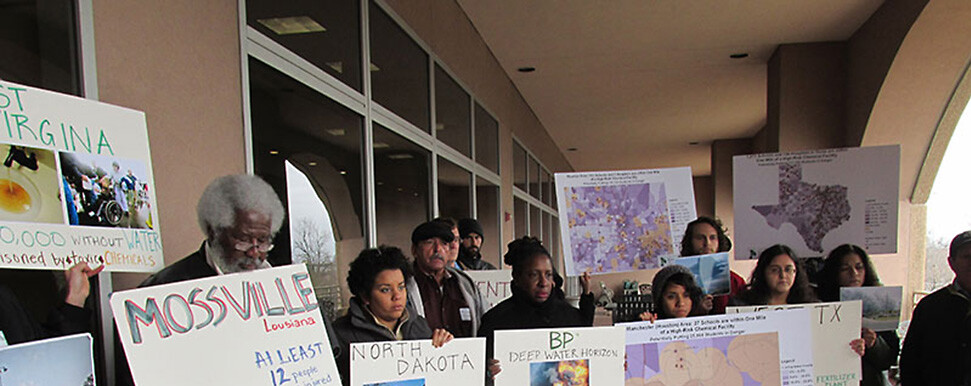
Media
June 25, 2020Blog: Black Lives Matter and the Environment
 Written by Alice Kaswan. Kaswan is a Professor at the University of San Francisco School of Law, and a member of the board of directors of the Center for Progressive Reform.
Written by Alice Kaswan. Kaswan is a Professor at the University of San Francisco School of Law, and a member of the board of directors of the Center for Progressive Reform.
The Center for Progressive Reform is a member of Coming Clean and authorized the re-posting of this blog, which was originally posted on CPRBlog on June 10, 2020.
Black lives matter. As we contemplate the scope of structural racism, we find that “Black Lives Matter” needs to be said over and over again. We say it as we push for policing that protects rather than threatens. And we can keep saying it. Like when we talk about having available, affordable health care. Having access to technology and broadband, a quiet space, and time when the classroom becomes off limits due to a pandemic or climate-driven extreme weather. Finding an affordable place to live and landlords who don’t discriminate. Finding meaningful work and getting a promotion. Finding fresh food. Getting respect.
And then there’s the environment. We still see stark disparities in exposures to environmental harms in our country. For example, communities of color are more likely to live in areas with higher levels of air pollution. For decades, people of color have been relegated to areas suffering cumulative pollution from industry, energy development, trucking, and highways and freeways. Meanwhile, the suburbs became pristine havens for whites only, shaped by restrictive housing covenants that were pushed by banks, the federal government’s loan policies, and the real estate industry.
And harm from pollution is not just about how much pollution you’re exposed to, but your underlying vulnerability. The less you have access to good nutrition, good health care, and economic and emotional security, the greater the harm from a given level of pollution. The significance of underlying vulnerabilities has also been in sharp relief as climate change impacts mount. Few can forget the devastating impacts of Hurricane Katrina on New Orleans’ black residents, many of whom lived in flood-prone areas, lacked the resources to flee, and were left behind by the city's inadequate evacuation planning. Similarly, we can all remember the months and years of hardship in Puerto Rico after Hurricane Maria, where underlying socioeconomic challenges compounded the harm, and American citizens were treated as if they were some other country's problem.
The story continues with the COVID-19 pandemic. The more you’ve been exposed to pollution, the greater health risks you appear to face from the virus. And the connection between pollution “sacrifice zones” and black vulnerability to COVID has not gone unnoticed. In both directions – health to pollution risk and pollution to health risk – risks are compounded.
If we take Black Lives Matter seriously, then we need a holistic vision for environmental and climate progress. Environmental and climate well-being are not separate from socioeconomics. Environmental policies that do not account for cumulative harms and underlying vulnerabilities will not protect people, and especially not the people of color who experience disproportionate harm. Moreover, socioeconomic policies that improve underlying physical and mental health can lessen vulnerability.
Reducing the risks of climate change will require a fundamental transition to a clean energy economy. That transition should prioritize the communities facing the worst pollution, where transitioning to clean energy will not only reduce greenhouse gases, but also reduce the persistent harms experienced in many communities of color. And the more we direct clean energy resources, like electrified transportation powered by renewables, energy efficiency, and distributed renewable resources, to communities that have historically been left behind, the more we can make up for past exclusion and provide a path for sharing in a green economic transition.
While the risk of police brutality is fresh on our minds at the moment, it is also time to come to terms with the myriad ways black lives have been treated as if they don't matter, and to set our sights on new approaches that seek to repair the damage wrought by persistent racial injustice.
